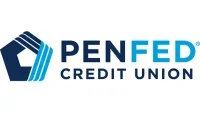PenFed Credit Union vs. U.S. Bank: Which offers better auto loans?

Key takeaways
- PenFed Credit Union has lower rates and higher loan amounts than U.S. Bank, but you must become a credit union member to qualify.
- U.S. Bank is a good option if you’re seeking shorter loan terms, but refinancing isn’t available in all states.
- Before selecting a lender, be sure you understand the fees assessed, including any prepayment penalties, and review the total cost of borrowing.
Credit unions like PenFed and banks like U.S. Bank are both good places to look for an auto loan — credit unions tend to offer lower interest rates, but you must become a member to borrow. Both options typically offer lower rates than you’d find through dealer financing, no matter where you live. But there are differences between the two that you need to know before making your choice.
PenFed Credit Union vs. U.S. Bank at a glance
PenFed Credit Union was established in 1935 and is the second-largest credit union in the country. It offers auto loans nationwide and has some of the lowest rates on the market. But if you’re looking for a short-term loan to minimize interest charges, U.S. Bank may be the better choice.
| PenFed Credit Union | U.S. Bank | |
|
Bankrate score |
4.5/5 |
3.3/5 |
|
Better for |
Competitive rates and a car-buying service | Shorter loan terms |
|
Loans offered |
New and used financing, auto refinancing |
New and used financing, auto refinancing, lease buyout |
|
Loan amounts |
Up to $150,000 |
$5,000 and up |
|
APRs |
Starting at 4.44% |
Starting at 7.18% |
|
Loan term lengths |
36–84 months |
12–60 months |
|
Fees |
Late fees and returned payment fees |
Late fees, returned payment fees and prepayment penalties |
|
Minimum credit score |
Not specified |
Not specified |
|
State availability |
All states |
All states (new and used loans); 25 states (refinancing) |
|
Time to funding |
Not specified |
Not specified |
|
Autopay discount? |
None |
0.5% |
|
Refinancing restrictions |
Must have fewer than 125,000 miles |
Not specified |
PenFed Credit Union auto loans

PenFed Credit Union
-
PenFed Credit Union offers new and used auto loans and auto refinancing, with some of the lowest interest rates available in today’s market. If you want to finance more than the cost of the vehicle, such as gap insurance or add-ons, PenFed will fund up to 125% of the purchase price, as much as $150,000.
Although PenFed doesn’t disclose the eligibility requirements you must meet to qualify, it does offer prequalification — this means you can check your eligibility and potential rates without harming your credit score.
However, to qualify for PenFed’s lowest rate, you must use its TrueCar car-buying service. Although non-members can apply for a PenFed auto loan, you must become a credit union member before accepting loan funds. Membership is available to all — simply open a savings account with a minimum deposit of $5.
-
Pros
- Competitive starting rates
- No prepayment penalty
- 24/7 customer service
Cons
- PenFed membership required
- No autopay discount
- Must use car-buying service to qualify for lowest rates
U.S. Bank auto loans

U.S. Bank
-
U.S. Bank’s autopay discount is much higher than competitors offer — if they offer a discount at all. Knocking 0.5 percent off your APR may not seem like much, but it can add up to hundreds of dollars in savings over the life of the loan. This bank also offers lease buyouts, which PenFed does not. U.S. Bank offers auto loan refinancing, but only in certain states.
You must agree to a hard credit check to get preapproved for a U.S. Bank auto loan, but if you qualify, your rate will be locked in for a 30-day shopping window. Loan funds may only be used at a participating dealership.
However, U.S. Bank’s starting rate for new vehicles is higher than PenFed’s and the national average APR of 6.61 percent. To qualify for its lowest APR, you must meet several criteria, including a credit score of 800 or higher. If you want to pay off your auto loan within the first year, you’ll be charged a prepayment penalty worth 1 percent of the original loan amount, with a maximum of $100.
-
Pros
- Generous autopay discount
- U.S. Bank account not required
- Short repayment terms available
Cons
- Prepayment penalty charged for full repayment within first year
- Strict requirements for lowest rate
- Refinancing only available in 25 states
How to choose between PenFed and U.S. Bank
If you have excellent credit and can qualify for PenFed’s lowest rate, an auto loan from this credit union is worth exploring. But if both lenders offer you comparable rates, U.S. Bank’s generous autopay discount could tip the scales.
APR range
PenFed’s lowest advertised rate of 4.44 percent is lower than the national average auto loan rate of 6.61 percent. But this rate is only available on new car purchases made through PenFed’s car-buying program. Without the car-buying discount, PenFed’s lowest new-car rate is nearly a full percentage point higher.
But even without the discount, PenFed’s auto loan rates are lower than those offered by U.S. Bank, making the bank’s autopay rate discount particularly valuable.
Minimum credit score
PenFed Credit Union and U.S. Bank don’t specify the eligibility criteria you must meet to qualify for an auto loan. However, to receive U.S. Bank’s lowest interest rate, you must have a credit score of at least 800.
Repayment terms
PenFed Credit Union offers industry-standard repayment terms of three to seven years. With the rising cost of vehicles, repaying the loan over a longer term can yield a lower monthly payment — but you’ll pay more in interest over the life of the loan.
To maximize your interest savings, you should choose the shortest repayment term you can reasonably afford. U.S. Bank offers terms between one and five years.
Loan amount
If you’re eyeing a luxury vehicle, both lenders offer six-figure auto loans. PenFed Credit Union will finance up to $150,000, while U.S. Bank offers loans as large as $100,000.
Both lenders also allow borrowers to finance more than just the cost of the vehicle. PenFed funds up to 125 percent of your car’s purchase price, so you can roll an extended warranty or dealer add-on into your loan — at the cost of additional interest. U.S. Bank also finances loan-to-value ratios above 100 percent, but doesn’t publish a specific cap.
Fees
One of U.S. Bank’s major drawbacks is its prepayment penalty, also called an early closure fee. If you pay off your car within the first year, you will face a fee equal to 1 percent of your original loan amount, with the maximum fee set at $100. This is an increasingly uncommon fee for auto loans.
Both PenFed and U.S. Bank charge standard late payment and insufficient funds fees.
Bottom line: Which lender is better?
With PenFed’s lower rates, you’re likely to find a less expensive auto loan with this credit union. Through its partnership with TrueCar, PenFed can also help you locate your next vehicle.
However, if you value in-person service, U.S. Bank has over 2,000 branches in 26 states, while PenFed has fewer than 50 locations. Be sure to enroll in automatic payments to receive a rate discount worth 0.5 percentage points.
Compare more lenders before applying
The best way to ensure you’re choosing the right lender is to compare the auto loan rates and other loan terms of multiple lenders. Here are a few of the other best auto loan lenders to consider:











